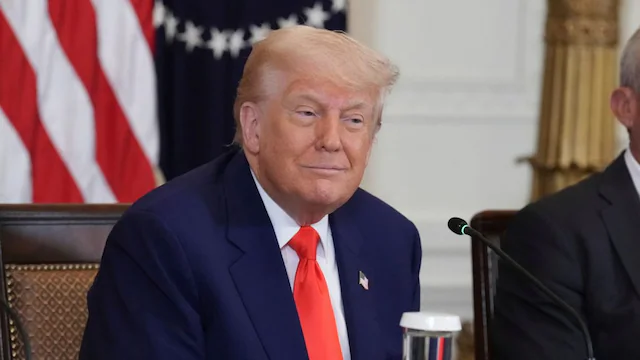- Courses
- GS Full Course 1 Year
- GS Full Course 2 Year
- GS Full Course 3 Year
- GS Full Course Till Selection
- Online Program
- GS Recorded Course
- NCERT (Recorded 500+ Hours)
- Polity Recorded Course
- Geography Recorded Course
- Economy Recorded Course
- AMAC Recorded Course
- Modern India, Post Independence & World History
- Environment Recoded Course
- Governance Recoded Course
- Science & Tech. Recoded Course
- International Relations and Internal Security Recorded Course
- Disaster Management Module Course
- Ethics Recoded Course
- Essay Recoded Course
- Current Affairs Recoded Course
- CSAT
- 5 LAYERED ARJUNA Mentorship
- Public Administration Optional
- ABOUT US
- OUR TOPPERS
- TEST SERIES
- FREE STUDY MATERIAL
- VIDEOS
- CONTACT US
INDIA-MIDDLE EAST-EUROPE CORRIDOR
INDIA-MIDDLE EAST-EUROPE CORRIDOR
19-09-2023
Latest Context
The India-Middle East-Europe Economic Corridor (IMEC) Project, which has huge geopolitical and economic ramifications for India, was recently signed at the G20 Summit in New Delhi.
Facts about the India-Middle East-Europe Economic Corridor (IMEC) Project
- The projected IMEC will be made up of railroad, ship-to-rail, and road transport networks that span two corridors: the Northern Corridor, which connects the Gulf to Europe, and the East Corridor, which connects India to the Arabian Gulf.
- A high-speed data cable, a hydrogen pipeline, and an electrical cable will also be part of the IMEC corridor.
- The project is a component of the Partnership for Global Infrastructure and Investment (PGII).
- PGII is a values-driven, high-impact, and transparent infrastructure partnership to meet the enormous infrastructure needs of low and middle-income countries.
- Signatories: India, the US, Saudi Arabia, UAE, the European Union, Italy, Germany and France.
-
Ports to be Connected:
- India: Mundra (Gujarat), Kandla (Gujarat), and Jawaharlal Nehru Port Trust (Navi Mumbai).
- Middle East: Fujairah, Jebel Ali, and Abu Dhabi in the UAE as well as Dammam and Ras Al Khair ports in Saudi Arabia.
- Railway line will connect Fujairah port (UAE) to Haifa port (Israel) via: Saudi Arabia (Ghuwaifat and Haradh) and Jordan.
- Israel: Haifa port.
- Europe: Piraeus port in Greece, Messina in South Italy, and Marseille in France.
- Objective: In order to connect India, the Middle East, and Europe, a comprehensive transportation network made up of rail, road, and maritime lines is intended. It seeks to improve transportation effectiveness while cutting costs, fostering economic unity, creating jobs, and reducing greenhouse gas (GHG) emissions.
- Significance: Upon completion, it would provide a "reliable and affordable cross-border ship-to-rail transit network to supplement existing maritime and road transports."
Geopolitical and Economic Implications of IMEC
-
Geopolitical:
- Thwart to China’s BRI: In the Eurasian continent, IMEC is viewed as a potential rival to China's Belt and Road Initiative (BRI). It can act as a check on China's expanding political and economic power, particularly in areas with a long history of close links to the United States.
- Integration Across Civilizations: The project can improve connections and integration between different eras, continents, and civilizations. Given China's expanding sway in the region, it presents a strategic chance for the U.S. to keep up its position and reassure long-standing allies.
- Breaking Pakistan's Overland Connectivity Veto: Pakistan's veto on India's overland access to the West has been broken by IMEC, removing a long-standing barrier.
- Strategic Engagement with Arabian Peninsula: By developing long-lasting connectivity and strengthening political and strategic ties with countries in the region, the corridor increases India's strategic involvement with the Arabian Peninsula.
- Promoting Intra-Regional Connectivity and Peace: In the Arabian Peninsula, IMEC has the ability to ease political tensions and encourage intra-regional connectivity. It has the potential to serve as the region's "infrastructure for peace".
- India's Strategic Role in Africa: The US and EU's intention to create a Trans-African corridor might be aligned with the corridor's model by extending it to Africa. This expresses India's intention to deepen its relationship with Africa and support the continent's infrastructural growth.
-
Economic:
- Enhanced Trade Opportunities: The IMEC offers India a game-changing chance to accelerate economic growth by improving its trade connectivity with important regions. By reducing passage times drastically, the route might speed up trade with Europe by 40% when compared to the Suez Canal Sea route.
- Encouraged Industrial Growth: The corridor will build a reliable transportation system for the smooth transportation of goods. This will make it easier for businesses to transfer raw materials and completed goods, which will promote industrial expansion overall and in regions along the corridor in particular.
- Job Creation: There will be a boom in employment prospects across industries as economic activity increases as a result of enhanced connectivity. Trade, infrastructure, and related businesses will expand, requiring both skilled and unskilled labour, which will increase employment.
- Access to resources and energy security: The corridor can help safeguard energy and resource supplies, particularly those from the Middle East. The stability of India's energy industry and support for its expanding economy will come from reliable access to these resources.
- Special Economic Zones (SEZs) facilitation: The corridor can be strategically used to promote the development of SEZs (Special Economic Zones) along its course. SEZs have the potential to increase production, draw in foreign investment, and stimulate the local economy.
Challenges to the IMEC
- Issues with Logistics and Connectivity: Building a multimodal transportation corridor that includes rail, road, and marine links that cross several nations necessitates intricate logistical planning and cooperation amongst stakeholders. Key problems include determining the most practical and economical routes, evaluating the viability of rail and road connections, and guaranteeing the best possible connectivity.
- Significant segments of rail linkages are lacking, particularly in the Middle East, necessitating significant building efforts and financial investment to complete the train network.
- Coordination Among Many Countries: One of the biggest challenges in establishing this cross-continental corridor is coordinating activities, policies, and laws among many countries with various interests, legal frameworks, and administrative processes.
- Potential Conflict and Competition: Conflict and diplomatic obstacles may arise from current transport routes, particularly Egypt's Suez Canal, which may experience decreased traffic and earnings.
- Price and funding: It is extremely difficult to estimate and get appropriate funding for the corridor's development, operation, and upkeep. There are likely to be significant development expenditures, so funding sources must be found. According to preliminary estimates, the cost to develop each of these IMEC lines might range from USD 3 billion to USD 8 billion.
Way Forward
- For smooth operations, it is essential to achieve technological compatibility and uniformity in terms of gauges, train technologies, container dimensions, and other crucial issues across many countries.
- For a successful implementation, it is essential to strike a balance between the geopolitical interests of the participating countries and any potential political sensitivities, particularly with regard to Israel.
- Important facets of the project include addressing environmental impact issues, assuring sustainability, and following green and eco-friendly building and operation practises.
- Strong security measures must be put in place in order to protect infrastructure and cargo from potential threats, theft, piracy, and other security issues.



